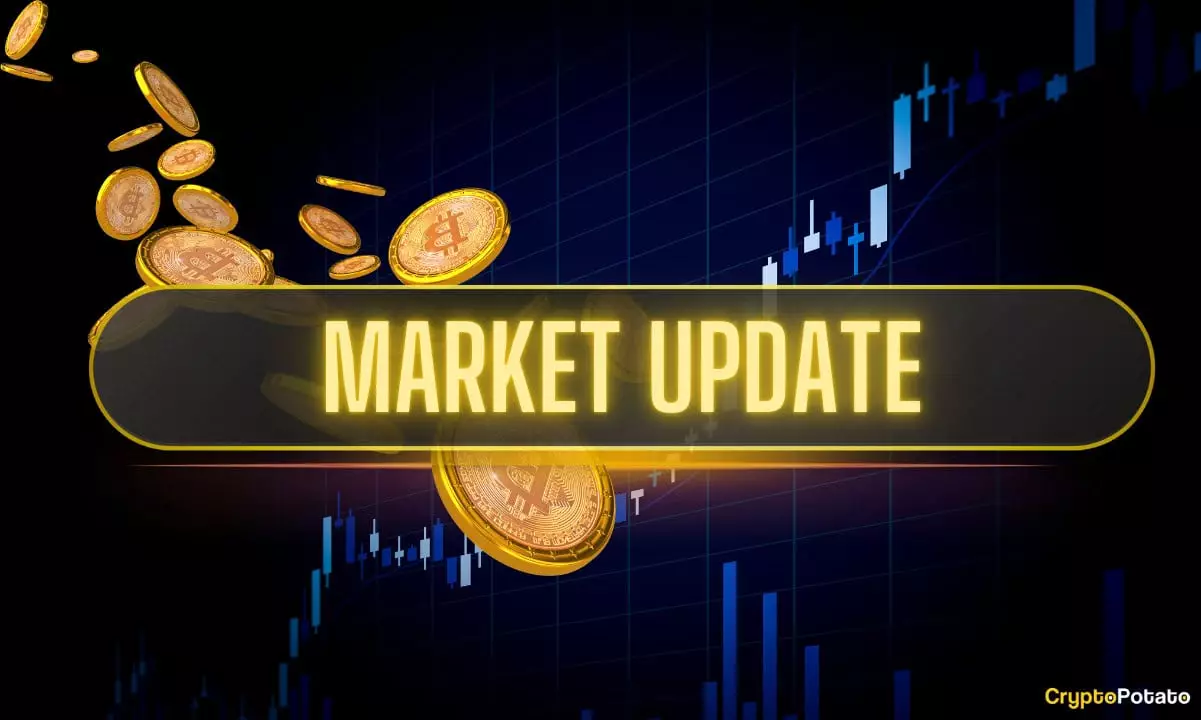In what has been yet another volatile week for the world at large, Bitcoin unexpectedly demonstrated a degree of resilience that speaks volumes about the evolving nature of cryptocurrency amidst geopolitical upheavals. A dramatic missile strike by Israel on Iranian soil, resulting in the tragic loss of over 70 lives—including high-ranking military and nuclear officials—sent shockwaves through global markets. Initially, Bitcoin’s price plummeted as investors reacted to the heightened tension, dropping from over $108,000 to below $103,000 almost instantaneously. Such reactions are not surprising given Bitcoin’s historical volatility, particularly during moments of international strife.
However, what’s intriguing here is Bitcoin’s remarkable bounce-back. Following the initial panic, a steady recovery led the cryptocurrency to stabilize around the $104,000 to $105,000 mark. This recovery illustrates a burgeoning sentiment among traders that Bitcoin can, indeed, weather the storm of external pressures, challenging the narrative of cryptocurrency as merely a speculative asset.
The Role of Institutional Investors
As Bitcoin’s price fluctuates within this turbulent landscape, it is essential to consider the driving forces behind such resilience. On-chain data has indicated a stark presence of institutional players rather than retail investors. While retail activity appears muted—characterized by a lack of smaller transactions—the majority of price action is attributed to larger, institutional trades. The apparent “institutional dominance” in the market provides an apparent layer of stability that has become more vital as economic uncertainties loom large.
The institutional engagement is not merely a trend; it reflects a transformative phase where Bitcoin is increasingly perceived as an asset class capable of holding its own against traditional forms of investment. The fact that Bitcoin has consistently maintained pricing above $100,000 indicates a foundational shift in investor confidence and market structure, predominantly driven by institutional capital.
Market Reactions to Regulatory Developments
In the realm of regulation, there have been notable developments that indicate a shift towards structured oversight of cryptocurrencies. The recent passage of the GENIUS Act in the U.S. Senate has redefined the regulatory landscape for stablecoins. With an overwhelming majority supporting the bill, the implications for cryptocurrencies and their intersection with governmental regulations could be monumental.
Indeed, regulatory clarity can inspire investor confidence, further propelling Bitcoin and its peers into a more mature financial landscape. This, in contrast to the uncertainty that surrounded early cryptocurrency adoption, suggests that cryptocurrencies like Bitcoin are on a trajectory towards mainstream acceptance. Ultimately, this legislative movement aims to create frameworks that could further legitimize the crypto market, directly impacting institutional investment behaviors and consumer trust alike.
Ethereum’s Stamina: A Different Narrative
While Bitcoin garners the headlines, Ethereum is quietly laying down impressive statistics. With over 35 million ETH staked and an astonishing 22.8 million ETH held by long-term investors, Ethereum’s ecosystem continues evolving. Despite fluctuations in price—currently sitting at around $2,560—its network activity indicates a robust commitment from investors who seem to be betting on Ethereum’s long-term potential over short-term gains.
Such sustained interest suggests that investors are beginning to view Ethereum not just as a speculative asset but as an integral component of future decentralized applications and financial systems. This mentality can help solidify Ethereum’s standing as a formidable player alongside Bitcoin, albeit with different underlying propositions.
Discernment in Altcoin Investments
While Bitcoin and Ethereum capture much of the market’s attention, discerning investors must be mindful of the altcoin arena, where potential opportunities and risks lie in abundance. The week saw select altcoins performing impressively, such as WBT, which surged 45% to mark a new all-time high, while Bitcoin Cash and Uniswap also showcased commendable returns.
However, this fervor is juxtaposed with cautionary tales represented by underperformers like HYPE, ADA, and DOT, which saw declines over the same period. Such discrepancies underline the importance of informed decision-making when navigating the altcoin market. Investors would do well to exercise discernment, focusing on projects with robust fundamentals and clear usage propositions rather than following trends blindly.
The Dynamics of a Constrained Supply
Adding yet another layer to the discussion is the ongoing narrative surrounding Bitcoin’s supply limitations. As reported, approximately 566 BTC shifts into an “ancient supply” status each day, which dramatically exceeds the daily mining issuance of 450 BTC. The crux of this shift illustrates a potentially constraining supply that can lead to increased scarcity over time—an essential factor for understanding Bitcoin’s price movements in the long run.
The implications of diminishing supply against rising demand could create a perfect storm for price appreciation, fostering a more favorable environment for both institutional and retail investors alike. This dynamic shapes a narrative where scarcity becomes a primary selling point in the broader discourse surrounding Bitcoin.
In these turbulent times, the evolving nature of cryptocurrency—and particularly Bitcoin—reveals that both resilience and volatility co-exist, offering rich narratives and lessons for investors across the spectrum.

